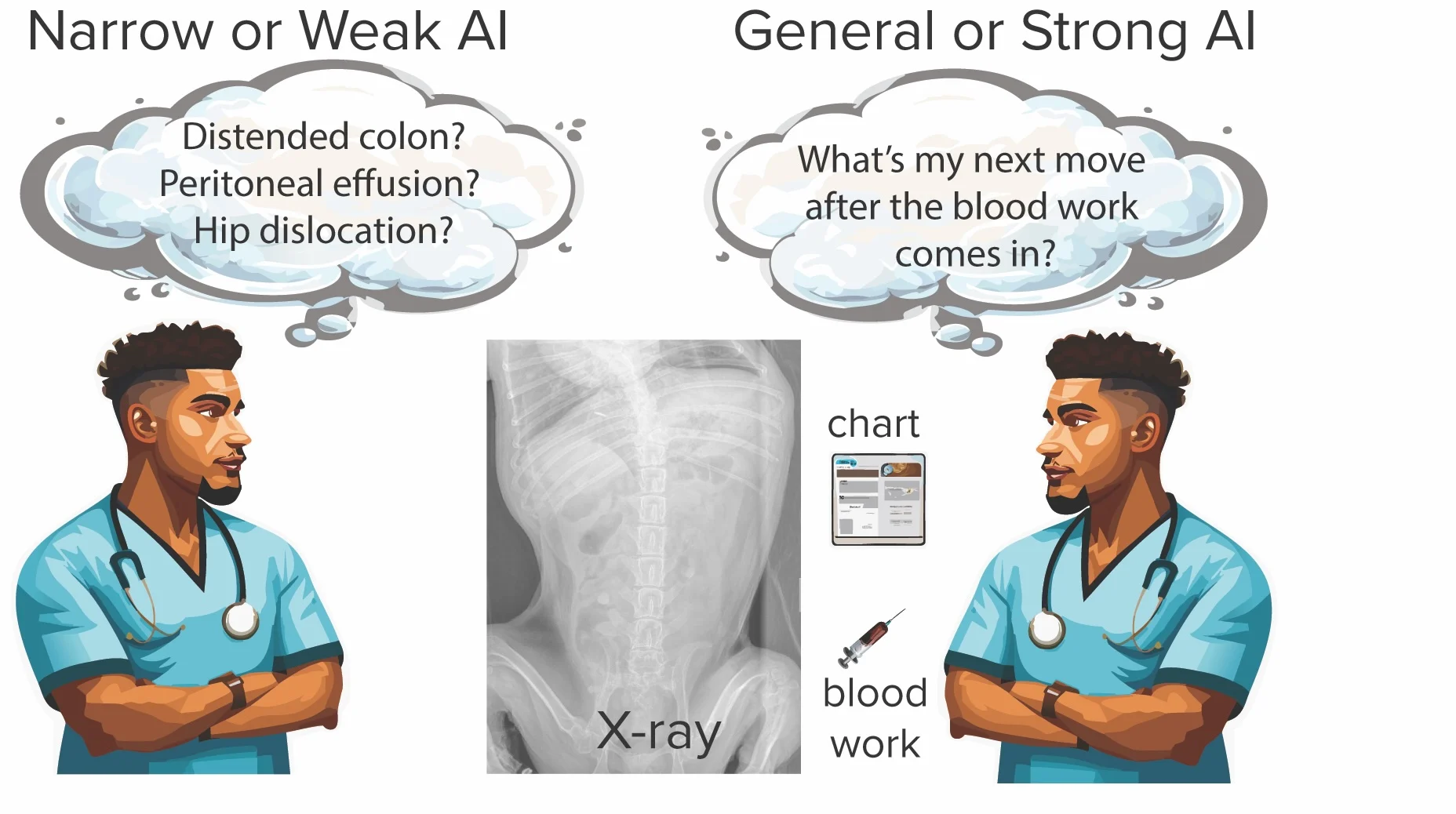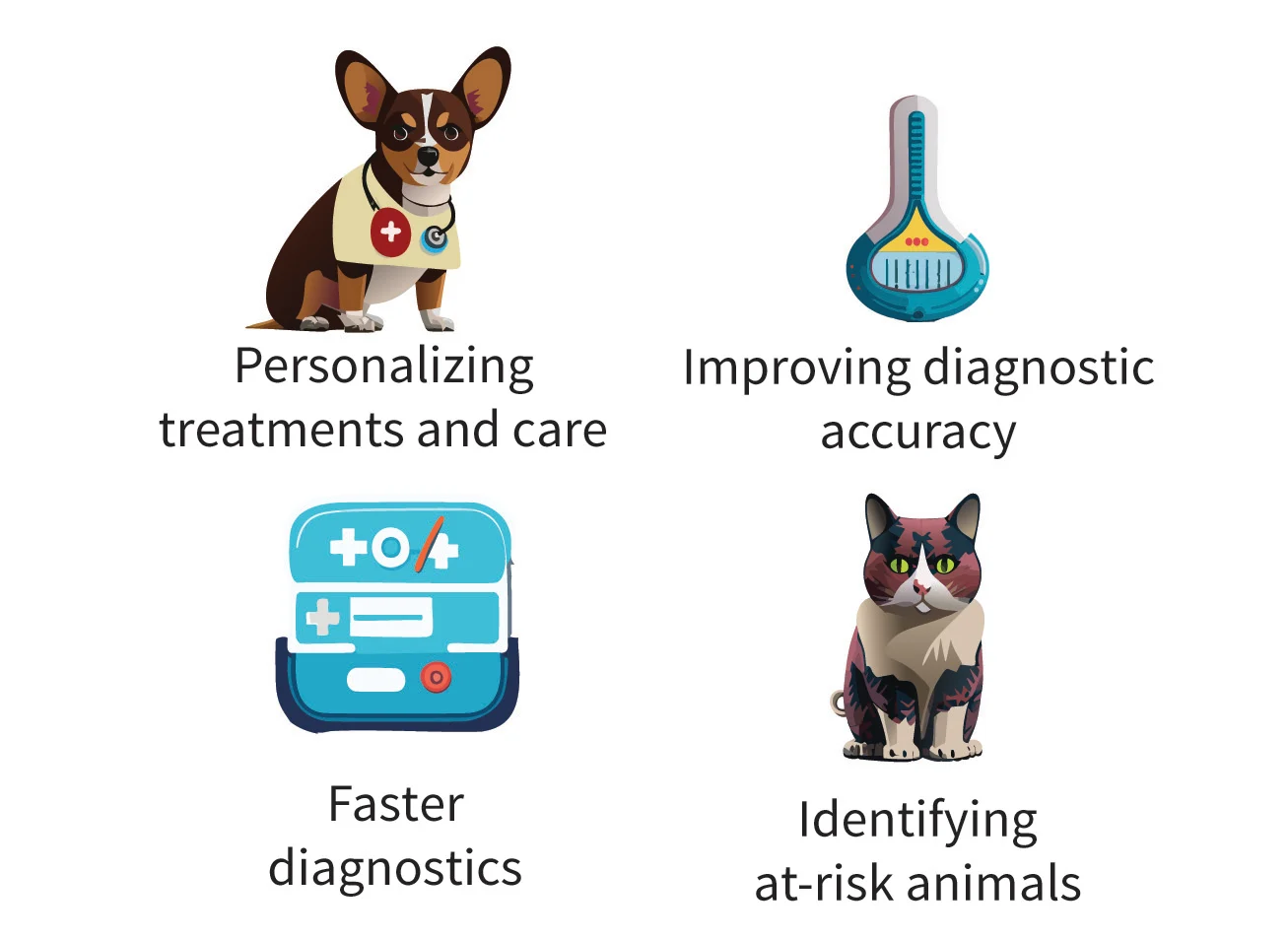Artificial intelligence (AI) is changing the landscape of healthcare and biomedical research and has widespread availability.1 Although the emergence and integration of AI into veterinary medicine lags behind human medicine, clinicians and pet owners now have access to powerful and potentially deleterious technology.
As generative AI emerges, particularly large language models designed to recognize and learn patterns from vast datasets and autonomously produce new content based on those patterns,2 it is important to ask:
Are these technologies being used in practice and by pet owners?
What are the advantages and challenges of using AI in veterinary practice?
How can the abilities of AI be safely harnessed to benefit animals and their caregivers?
What Is AI & What Can It Do?
AI generally refers to an agent, typically code running on a computer, that simulates human learning, reasoning, and self-correction. These agents are designed to excel at speech recognition, computer vision, and language processing tasks. Some agents complete specific tasks (ie, narrow or weak AI), whereas others are designed to learn and apply knowledge across a broad range of functions (ie, general or strong AI). For example, a veterinary radiologist may need to detect or classify an abnormality on a radiograph based exclusively on the grey scales and their patterns (Figure 1). A narrow AI agent, consisting of a sophisticated computer algorithm trained on thousands of images labeled by experts, could provide a list of potential diagnoses based on the submitted radiographic image. Alternatively, a general AI agent could consider a variety of inputs (eg, patient history, radiographs, test results), synthesize these data types, and learn from previous cases with similar trends to suggest the next course of action.

Narrow AI compared with general AI. This image was created using generative AI tools.
AI can also be used to find trends in data (inductive) or predict a trend from data (deductive). Use of AI algorithms to find trends in large datasets is increasingly vital to the development of new drugs in human and veterinary medicine. Machine learning can find patterns and trends that link phenotypes with genotypes to help improve diagnoses and treatments.
Benefits of Using AI in Veterinary Medicine
Narrow AI is currently the most predominant AI used in veterinary research and clinical practice. AI vendors offer many commercial technologies, including AI-powered image analysis to assess radiographs, improved cancer treatment regimens based on machine-learning modeling from cytology data, and slide-free cell analysis via computer vision.3-5 In addition, new technologies are continuously being developed.
AI can increase workplace productivity and efficiency by improving diagnostic accuracy. Personalized treatment plans can be developed based on individual patient characteristics (eg, breed, phenotypes, genotypes), leading to more effective treatment plans and improved patient outcomes. AI predictive models can also identify patients at risk for certain conditions. These applications have the potential to significantly improve patient care (Figure 2).

Potential applications for AI in veterinary medicine. This image was created using generative AI tools.
Challenges of Using AI in Veterinary Medicine
Unfortunately, the developments in use of AI can also result in significant challenges.6,7 Cultivating patient data can be expensive.8 Developing, curating, and synthesizing data for AI models requires significant energy and is difficult, even for large academic centers. Variations in how clinicians code diagnoses, inter- and intravariability in sample and specimen interpretations, and unstructured text entries in medical records can make achieving consistent and sound data models difficult. Ethical and legal issues are also a consideration when using AI to make critical decisions.
Many facets of adopting and implementing AI in veterinary medicine are not yet understood; clinicians, industry professionals, and academics must tackle these challenges alongside AI developers.
Conclusion
Excitement surrounding AI in veterinary medicine will likely increase but may be dampened by real-world experiences. Clinicians will need to work together to understand AI’s range of usefulness.
Many open-access articles are available to help with better understanding of AI (see Suggested Reading).